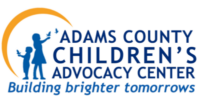
Overcoming the Trauma of Abuse
Adverse Child Experiences
Adverse Childhood Experiences (ACEs) refer to situations that children experience, usually within their home or community, that are potentially traumatic. Some examples of ACEs include experiencing abuse, violence, and/or neglect, witnessing a parent being abused, losing a parent due to separation/divorce or another reason, having a family member struggle with substance use or mental health, and having an incarcerated family member. ACEs have also been expanded since the original study to include experiencing racism, gender discrimination, witnessing a sibling being abused, witnessing violence outside the home, witnessing a father being abused, being bullied, involvement in foster care, living in an unsafe neighborhood, and losing a family member to deportation.
Experiencing many of these situations repeatedly over time can lead to “toxic stress,” the excessive activation of the body’s stress-response system within the brain, immune system, metabolic system, and cardiovascular system. When experiencing toxic stress, the brain consistently produces stress hormones (cortisol and adrenaline). While occasional stress is normal and healthy, an overload of these hormones can cause harm to the brain’s development and function (PACEs Connection, 2019).
Helping Children Cope After Trauma
It is possible for children to learn to cope in positive ways after experiencing trauma. Support from caring adults can drastically increase the chances of children adapting and overcoming their traumatic experiences. For some children, support from parents or guardians may be sufficient, while other children may need additional support from mental health professionals. Each child’s needs for coping will depend on many factors surrounding their trauma: the severity, timing, type, length of exposure, previous or co-occurring traumas, etc. There are many types of mental health services available for children. At the ACCAC, we offer Trauma-Focused Cognitive Behavioral Therapy and Art Therapy for the children we serve. Learn more about our mental health services. If you are curious whether mental health services will help your child, read how trauma therapy can play a vital role in your child’s healing.
How can parents/caregivers help children cope with trauma?
Start by assuring your child is now safe and continue to ensure their safety. Avoid the situation or people that were directly involved with or causing trauma to your child as much as possible. Explain how you will be keeping them safe in age-appropriate language so they understand what is happening.
Also, explain to your child that they are not responsible for what happened to them. The traumatic events were out of their control. If they disclosed abuse, remind them how brave they are to tell someone what occurred.
Create connections for your child with friends and family to be additional support while they process their experience. These connections should reduce the child’s anxiety and increase their sense of safety. The child may choose to talk about their trauma with these connections but should not be forced.
Routines may need to be adjusted to ensure the child’s safety but can help restore and maintain a sense of normalcy for the child. These routines should have reasonable expectations for what your child is able to do while coping with their trauma. Consistency in the home can help a child know that the adults in their life can be trusted and will be there for them when needed. Find additional information from the Child Welfare Information Gateway & Children’s Bureau.
How do you know if your child could benefit from professional mental health services?
The ACCAC supports mental health care and supports families’ decisions to participate in counseling and/or therapeutic services. While every child may show different signs of mental health issues, there are some general signs to look for. The signs below are in no order of importance and there is not a specific number of signs you must see before contacting a mental health professional.
- Excessive worry or sadness: If these thoughts and feelings appear to consume your child’s daily life, it could be especially indicative of anxiety or depression.
- Sudden change in interests or habits, including a lack of desire for preferred activities: Significant and long-lasting changes in eating, sleeping, and personal habits can be suggestive of anxiety, depression, or other mental health issues.
- Defiant behaviors: These behaviors may occur inside or outside the home, including arguing, complaining, or defensiveness over requests. An increase in these behaviors may be normal developmentally, depending on the child’s age, but if the change in behavior is sudden and increasingly frequent, it may be of concern.
- Regression: If a child’s developmental behaviors suddenly regress, this could be a sign of serious concern. Examples include bedwetting (when already toilet-trained), new and frequent temper tantrums, new separation anxiety from caregivers, overall fearfulness, and language regression.
- Social isolation: If a child is usually very social, ongoing withdrawal from friends and family may indicate a child is struggling with mental health. This could include decreasing time spent with friends outside the home, eating lunch alone in school, avoiding extracurricular activities, and a lack of desire to leave the home.
- Talk of self-harm or suicide: If your child expresses thinking about self-harm or that they have attempted self-harm, this is a serious sign of needing additional mental health support. While many times adults view this as attention seeking, it can really be a child’s way of seeking help and support when they do not know any other way of asking for help. Examples of self-harm talk could include talking about cutting themselves, talking about committing suicide or creating a plan to do so, or expressing feelings of worthlessness and hopelessness. If a child expresses that they have committed self-harm recently and/or discusses thoughts of suicide, contact a mental health professional or crisis intervention line immediately.
- National Suicide Prevention Lifeline: 1-800-273-8255
- PA Support & Referral Hotline: 1-855-284-2494
- WellSpan Crisis Intervention: 717-851-5578 OR 800-673-2496
- TrueNorth Crisis Intervention: 717-637-7633 OR 866-325-0339




